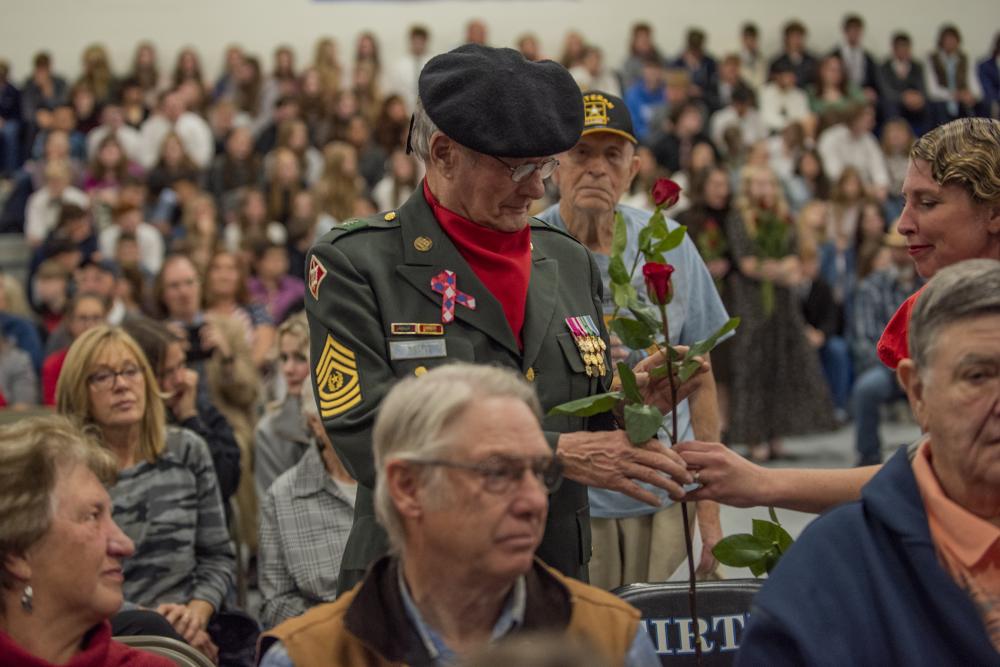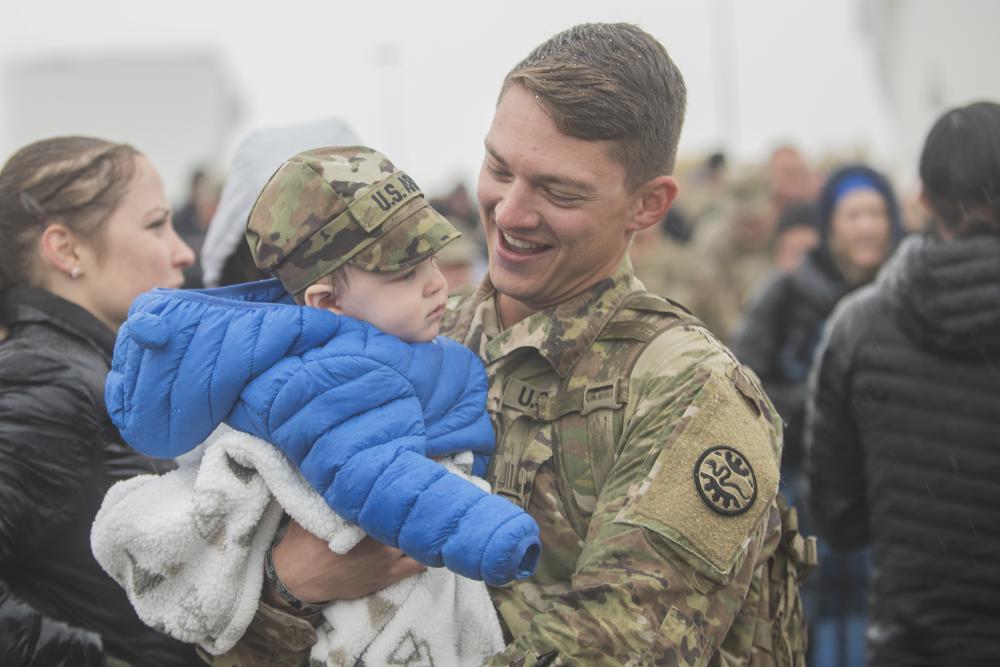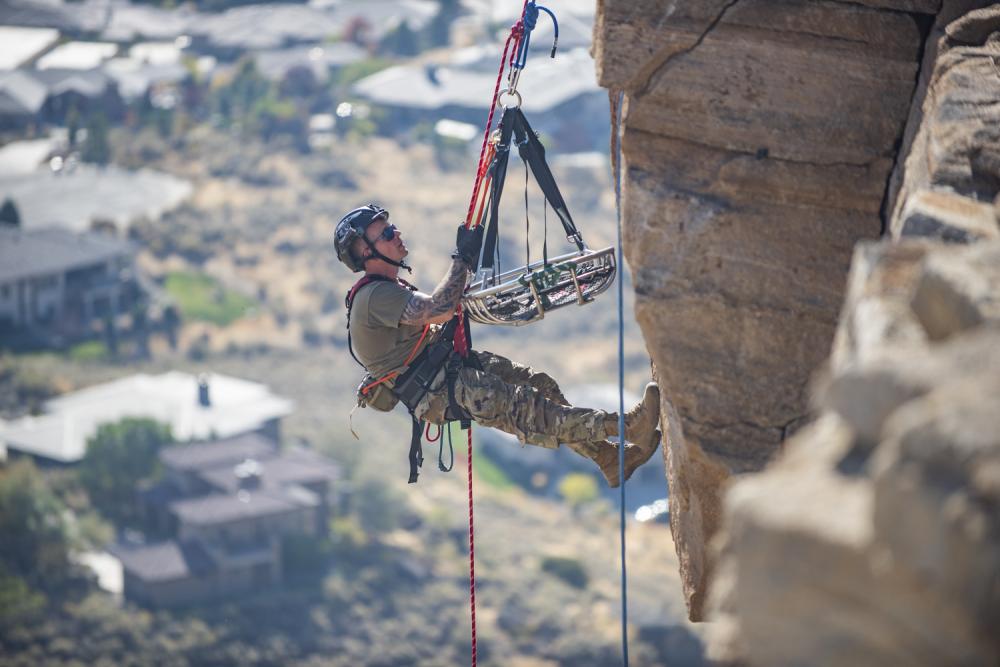Author: Becky Vanshur
A small Idaho town makes a big Veteran’s Day impression

The rural town of Firth held a large Veteran’s Day assembly in Eastern Idaho on Nov. 10th, inviting hundreds of attendees, including Idaho’s adjutant general, Maj. Gen. Michael Garshak.
The assembly honored more than 100 local veterans and their families with help from more than 600 local and surrounding town volunteers, students, teachers and administrators. The assembly was held at Firth High School. The population of the small town is just shy of 600 people, according to the latest United States Census Bureau.
Four Soldiers from the Idaho National Guard’s 148th Field Artillery Regiment posted the flags. Local veterans of all branches and current service members were recognized at the assembly and presented with plaques and roses. Garshak spoke at the assembly about the importance of patriotism.
“Those of us in the military in Idaho are fortunate to serve in a state that truly honors and appreciates military service, and nowhere more so than here in Eastern Idaho,” said Garshak.
He continued. “While Veteran’s Day is an opportunity to thank those who have sacrificed, especially during times of war, where the survival of our nation has hung in the balance, it is also an opportunity to recognize and appreciate the value military service brings to our state, our country and to those who serve.”
Garshak thanked every veteran, past and present, and future veterans, for their service to our nation. He thanked the crowd for their support as well on behalf of the Idaho National Guard and the U.S. military.
Garshak closed his remarks with the takeaway that military service is not all about sacrifice.
“Yes, there are times when it is hard, but that comes with all walks of life,” he said. “I’ve learned that the things we value the most, and bring the greatest reward, are the things that we have worked the hardest for.”
Idaho Soldiers return home from overseas deployment

The Idaho Army National Guard welcomed home to Boise, Idaho, nearly 100 116th Cavalry Brigade Combat Team Soldiers on Nov. 4th after a yearlong deployment to Southwest Asia in support of Operation Spartan Shield. An additional 100 other Soldiers returned to their communities elsewhere across the state throughout the day.
“These Soldiers embody what the National Guard is all about: citizen-Soldiers who serve their nation when called upon and return home to their families and communities,” said Brig. Gen. Farin Schwartz, commander, Idaho Army National Guard. “It’s an honor to welcome these Soldiers home and I thank each one of them for their service and dedication to our state and nation. For 10 months, our Soldiers deterred enemy aggression in a very hostile environment, symbolizing our nation’s commitment to our global partners and allies.”
The Soldiers deployed in November 2021 to support the 116th Cavalry Brigade Combat Team’s Task Force Griz, which was headquartered by the Montana Army National Guard and included Soldiers from the Idaho, Montana, Florida and Nevada Army National Guards.
Idaho Soldiers comprised nearly 20 percent of the task force, which spent 10 months overseas, in addition to receiving 45 days of training stateside before deploying.
OSS is a joint mission under the United States Central Command and is part of Operation Enduring Freedom. The task force provided three mission response forces to the CENTCOM commander and conducted missions and training exercises in Iraq, Jordan, the Kingdom of Saudi Arabia, Kuwait, Syria and Qatar.
The task force conducted security and stability operations and demonstrated the U.S.’s continued commitment to deterring adversaries while supporting regional allies. The task force was relieved in October by another 116th CBCT-led task force, including more than 600 Idaho Soldiers, who are expected to return next year.
Task Force Griz Soldiers began returning to Fort Bliss, Texas, Oct. 24 and conducted demobilization activities before returning home.
The 116th CBCT previously deployed in support of the Global War on Terror in 2004 and 2010 to Iraq.
Boise firefighters train Idaho’s Civil Support Team on rope rescue

Throughout the month of October, the Idaho National Guard’s 101st Civil Support Team partnered with the Boise Fire Department Technical Rescue Team to participate in a ropes rescue course taught by Boise firefighters. The course, which served as an annual recertification for the CST Guardsmen, entailed two weeklong sessions for the 22-member team and helped the Boise firefighters refine their skills as trainers.
“This training benefits both the Idaho National Guard and us,” said Brent Matthews, captain of the Boise Technical Rescue Team. “Not only are we certifying our partners on ropes rescue training, but our instructors also get valuable experience and more proficient as certifiable instructors.”
The first week, Oct. 10th through the 14th, started with the classroom portion of learning about ropes rescue as a prerequisite for the hands-on portion of the training. Using what they learned about the ropes, the CST Guardsmen rappelled from tops of buildings at the Boise Fire Department’s Fire Training Center.
Once the Guardsmen were proficient at ropes rappelling, they practiced ropes rescues using wire rescue baskets at cliffs near the Table Rock trails in the Boise foothills to simulate a large-scale rescue of multiple people.
“To utilize the CST in ropes rescue, there would be an instance where something serious happened like a natural or man-made disaster or an emergency where the local search and rescue team wouldn’t have enough resources and could call us,” said Lt. Col. Robert Grimes, 101st CST commander.
The second weeklong training, Oct. 24th through 28th, focused on confined space rescues at Boise’s Lucky Peak Power Plant. The training mirrored a scenario where a devastated occurrence or a large-scaled catastrophe, like an earthquake, happened with severe damage to a building that could involve chemicals. This would require HAZMAT precautions, along with a large number of rescues in buildings with confined spaces, and would involve ropes and sked stretchers.
These incidents could be intensified by a lack of oxygen that is available in a non-ventilated area and complicated by the tight confines of the space, requiring rescuers to have air tanks during a rescue.
“Confined space is a rescue of people, for instance, inside of a building, in a tunnel or inside tanks where there could be a HAZMAT situation. They might be injured too badly to get out on their own or they could be unconscious,” said Grimes. “The CST has the capability to respond to weapons of mass destruction and HAZMAT scenarios already. The ropes rescue and confined space training adds another capability for the CST to assist the local fire departments and local agencies.”
The Boise Fire Department Technical Rescue Team is highly trained to handle the emergencies involving ropes rescues and confined space rescues, however, they could call upon their 101st CST partners if the large number of rescues surpassed their limit.
“We’ve been building this relationship and working together for quite a while,” said Matthews. “The CST has really great HAZMAT capabilities. Having the CST already trained at HAZMAT, plus the ropes rescue and confined space training, benefits us as well. In the future, I’d like to see us integrate more in real-world situations. When we have a HAZMAT call with confined spaces, we can call them to assist. I can see us working really closely together in the future.”
 Official Government Website
Official Government Website